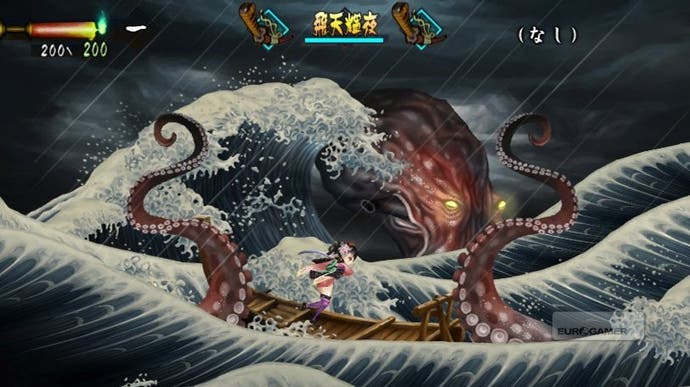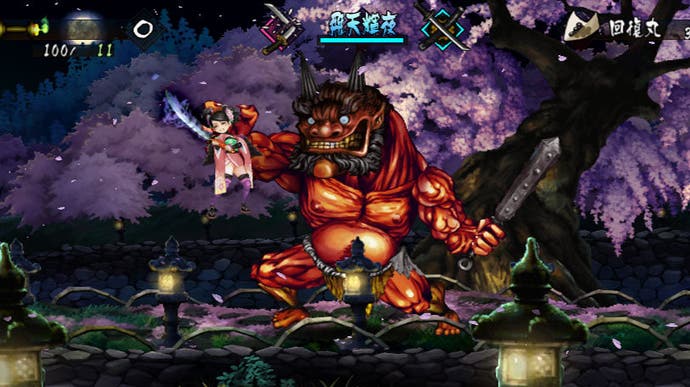Muramasa: The Demon Blade
A thing of beauty is a joy in small doses.
We were first introduced to Muramasa: The Demon Blade - Oboromurumasa to its friends - at the Tokyo Game Show last year, where the demo charmed Oli so entirely that he melted into an appreciative puddle. As would be expected from the makers of Odin Sphere, it's unfathomably gorgeous, beautiful in a way that no modern game is. You can hardly blame us for being besotted.
A scrolling fighter presented in detailed, sharp and artistically resplendent 2D sprites and backgrounds, the TGS demo presented Oboromuramasa as a series of edited highlights, throwing you into battle with a representative selection of the game's striking, idiosyncratic enemies and bosses for barely a minute at a time, serving up a taste of various distinct and obscenely lush parallax-scrolling environments and departing with the promise of more.
Unfortunately, and with heartbreaking predictability, the game is more enticing in this form, where we barely get the chance to get to know it and can concentrate entirely on its incredible, unique beauty. In its extended form, it's easy to see that, like many beautiful things, Oboromuramasa is a little lacking in substance. There's still an awful lot to like, though, and many reasons to be joyful that Rising Star is giving European gamers the chance to experience it in spring next year.

Combat is accessible, simple and forgiving. Playing on the normal difficulty setting, the game leaves you to concentrate on building up whichever of the two main characters you choose to play with, and on expanding their arsenal of swords, enjoying the mere spectacle of battle in the meantime rather than the challenge. The A button controls nearly everything. Stabbing it results in a series of sword flourishes, holding it down guards against projectiles and attacks.
Flicking the control stick in a direction whilst holding down the A button causes you to either sweep across the screen, sending enemies into the air, or roll to evade, or perform a powerful downwards strike from the air. B unleashes a special attack, anything from a flurry of quick strikes to one massively powerful hit that can cut a swathe through a whole screen of enemies, depending on the sword you have equipped. There's no jump button - instead you leap into the air with an upwards flick of the control stick and can stay up there almost indefinitely by maintaining an aerial combo.

You have three swords equipped at once, and switch between them with the C button - doing so at the right moment activates a screen-wide special attack - and each sword has its own health bar that recharges when it's not in use. General use wears it down, but it's blocking and special moves that really eat up your sword's durability. Needing to switch between swords gives a real rhythm to battle. It's all about aerial combat and combos, sweeping across the screen in a flurry of strikes.
The combat, however - enjoyable and visually spectacular though it is - feels imprecise. The game barely ever challenges you on the normal difficulty setting, instead letting you slice enemies up unperturbed, and as a result it gets repetitive after that first breathless, impressive half-hour or so. The next difficulty up is more technical, and the next after that more technical still - it unlocks upon completion, and limits your health to 1 hit point for the duration - but this isn't the hardcore 2D action game that its sprites and Japanese looks might suggest.


